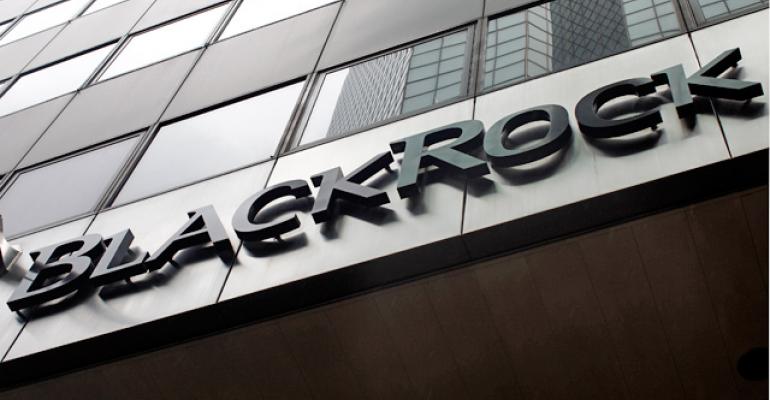By Rachel Evans
(Bloomberg) --They call it “pricing for the future.”
That’s the lingo executives at BlackRock Inc., the world’s largest asset manager, use to describe their strategy for exchange-traded funds: slashing management fees on basic products and attracting a wave of new buyers to offset the revenue lost on each individual sale.
But while scale can compensate for lower fees, much of the real cash BlackRock is seeking lies in getting the investors in these simple, cheap funds to eventually turn to something more complex -- and expensive.

“Clients get comfortable using the lower cost products, they feel that they’ve gotten good value from us and then they look at our other products,” Mark Wiedman, global head of BlackRock’s iShares business, said during an interview at Bloomberg’s New York headquarters. “It’s synergistic in bringing more and more clients to use more and more products.”
Revenue Recouped
So far it’s working. While revenue from BlackRock’s plain-vanilla funds, which charge as little as $3 on every $10,000, is growing faster than any other part of the ETF business, revenue from the firm’s more expensive products is also accelerating, according to Wiedman. That helped the money manager exceed analysts’ revenue estimates for the first time in four quarters during the three months ended September.
A fee war of epic proportions is roiling ETFs. State Street Corp. this week cut the expense ratio on 15 ETFs, following similar moves by Charles Schwab Corp. and Vanguard Group as issuers look to gain an edge in the battle for assets. You can see why: 45 percent of inflows this year have gone into products that charge less than 10 basis points, according to Bloomberg data.
About $90 billion has gone into BlackRock’s 25-fund low-cost ‘core’ series of ETFs in 2017, just over 50 percent of the company’s overall inflows, data compiled by Bloomberg show. New assets have helped recoup 100 percent of the revenue surrendered when the company lowered fees a year ago, Chairman and Chief Executive Laurence Fink said last week. That’s “way faster” than expected, according to Wiedman, who said the company had planned for this to take several years.
Branching Out
BlackRock is now testing its low-fee strategy on one of its more specialized ETFs, MBB, which holds mortgage-backed bonds. The intended beneficiaries are different, in this case the cuts target money managers fed up with wrangling a portfolio of home loans. But BlackRock again hopes that scale will balance out lower fees. The fund has gained more than $1 billion since the expense ratio dropped to 9 basis points in July, down from 27 basis points.
It’s all part of BlackRock’s long-range focus on developing relationships with existing investors in order to increase the amount each of its customers buys, Wiedman said.
“Many of our clients only use one or two ETFs from us,” he said. “If we simply got them to use one or two more, it would be huge growth for us.”
To contact the reporter on this story: Rachel Evans in New York at [email protected] To contact the editors responsible for this story: Nikolaj Gammeltoft at [email protected] Eric J. Weiner, Margaret Collins

